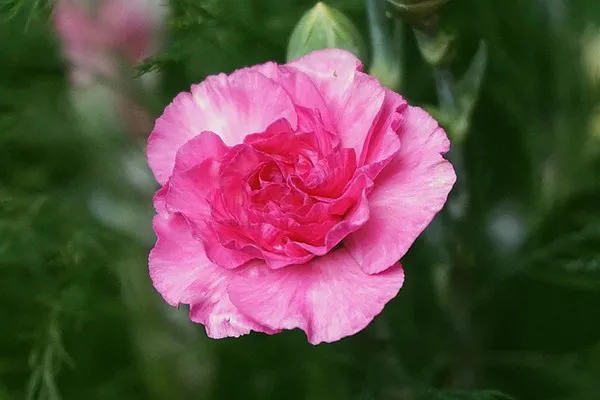Carnations, with their vibrant colors and delightful fragrance, have long been a favorite among flower enthusiasts. While you can purchase carnation plants from nurseries, it’s also possible to propagate these lovely blooms from cut flowers. Growing carnations from cut flowers is a rewarding endeavor that allows you to expand your garden and enjoy these beautiful flowers year-round. In this comprehensive guide, we will take you through the steps to successfully grow carnations from cut flowers.
Understanding Carnations
Before delving into the propagation process, it’s essential to have a basic understanding of carnations. Carnations (Dianthus caryophyllus) are perennial plants that belong to the Caryophyllaceae family. They are native to the Mediterranean region and are known for their ruffled petals and pleasant scent. Carnations come in various colors, including red, pink, white, yellow, and even bi-colored varieties. They are popular choices for flower arrangements, corsages, and bouquets due to their long-lasting blooms.
Why Grow Carnations from Cut Flowers?
Growing carnations from cut flowers is an excellent way to save money on purchasing new plants and expand your garden. It’s also a sustainable practice, as it reduces the demand for commercially propagated plants. Additionally, this method allows you to preserve and propagate your favorite carnation varieties, ensuring you have an abundant supply of blooms for various occasions.
Materials You’ll Need
Fresh Carnation Cuttings: Start with healthy carnation cut flowers that have not yet fully bloomed.
Clean Pruning Shears: Ensure your pruning shears are sharp and clean to make precise cuts.
Rooting Hormone: A rooting hormone powder or gel can help encourage root development.
Sterile Containers: Small pots or trays with drainage holes are essential for starting the cuttings.
Potting Mix: Use a well-draining potting mix that is suitable for starting seeds or cuttings.
Plastic Bags or Plastic Wrap: These are needed to create a mini greenhouse effect for the cuttings.
Spray Bottle: You’ll need this to keep the cuttings and soil moist.
Propagation Process
Selecting Cuttings: Choose healthy carnation cut flowers that have not yet fully opened. Look for stems that are free from any signs of disease or damage. A good cutting should have at least two sets of leaves.
Preparing the Cuttings: Using clean pruning shears, cut the stems of your selected carnations just below a node. A node is a small bump on the stem where leaves or branches emerge. Each cutting should be around 4-6 inches long and have at least two sets of leaves. Remove any leaves from the lower part of the stem to prevent rot.
Applying Rooting Hormone: Dip the cut end of each carnation cutting into rooting hormone powder or gel. This helps stimulate root growth and increases the chances of successful propagation.
Planting in Containers: Fill your sterile containers with a well-draining potting mix. Make small holes in the soil using a pencil or a stick and insert the prepared cuttings into the holes. Ensure that at least one set of leaves is above the soil level, and gently pat the soil around the cuttings to hold them in place.
Creating a Mini Greenhouse: To maintain high humidity around the cuttings, cover the containers with plastic bags or plastic wrap. This creates a mini greenhouse effect that encourages root development. Use a spray bottle to mist the cuttings and soil regularly to keep them moist.
Providing Adequate Light: Place the containers in a location with bright, indirect sunlight. Avoid direct sunlight, as it can scorch the cuttings. You can also use fluorescent lights or grow lights to provide consistent, even lighting.
Root Development: Over the next few weeks, monitor the cuttings for signs of root development. You can gently tug on the cuttings to check for resistance, which indicates the presence of roots. Once the cuttings have established a sufficient root system (typically in 4-6 weeks), they can be transplanted into individual pots or directly into the garden.
Transplanting: When the cuttings have developed strong roots, carefully transplant them into larger pots or your garden. Choose a location with well-drained soil and good air circulation. Space the plants about 12 inches apart.
Caring for Your Carnations: Water your newly transplanted carnations regularly, keeping the soil consistently moist but not waterlogged. Fertilize them with a balanced, slow-release fertilizer every 4-6 weeks during the growing season. Pinch back the tips of the stems to encourage bushier growth and more blooms.
Conclusion
Growing carnations from cut flowers is a fulfilling and sustainable way to expand your garden and enjoy these beautiful blooms year-round. With the right materials, patience, and care, you can successfully propagate carnations from cuttings, allowing you to preserve your favorite varieties and share the joy of these lovely flowers with others. Whether you’re a seasoned gardener or a beginner, growing carnations from cut flowers is an excellent addition to your gardening repertoire. So, roll up your sleeves, gather your materials, and start propagating your own stunning carnations today. Happy gardening!


